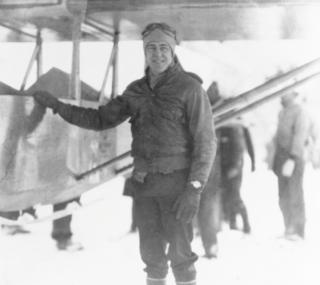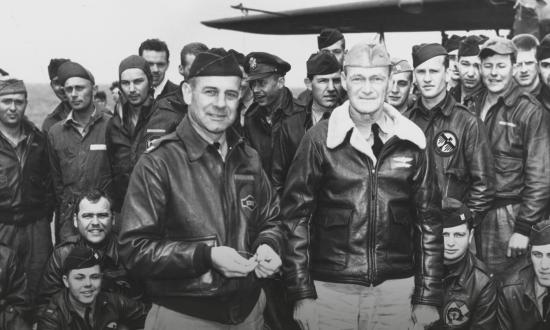Ralph S. Barnaby graduated from Columbia University in 1915 with a degree in mechanical engineering, moved in and out of civilian and active-duty Army and Navy enlisted and officer assignments, earned his wings, and as a captain in his final tour, commanded the Naval Aircraft Modification Unit in Johnsville, Pennsylvania, in 1944–45. His lifelong passion, expertise, and renown were in soaring and gliding.
Barnaby designed and built his first man-carrying glider in 1909. As he recalls in these edited excerpts from his Naval Institute oral history:
In 1920, we began hearing about German gliding schools. In 1928, some American industrialists brought over some German glider pilots and their gliders, had them do some flying around the country, and established a school on Cape Cod.
In 1928, I tried to get a month’s leave from the Navy to go over to Germany to take a course in one of their glider schools but was turned down. I decided to pool my leave and take the course at Cape Cod. I was fortunate to be the first one to fulfill the requirements and get the first American soaring certificate.
In 1924, as part of war reparations, the Navy had acquired a German zeppelin and commissioned her as the 659-foot rigid airship USS Los Angeles (ZR-3). In the fall of 1929, Rear Admiral William Moffett sent for Lieutenant Barnaby.
I thought, What have I done wrong?
“Sit down, Barnaby,” Moffett said. “Do you think it would be possible to launch a glider from the Los Angeles? Think it over carefully and see me tomorrow, because if your answer is yes, you’re going to do it.”
I didn’t sleep much that night and told him the next day it was possible, and I would do it under certain conditions. The Navy had to acquire for me the glider I used in my soaring flights on Cape Cod, and I had to go to the Los Angeles’s air station at Lakehurst, New Jersey, to supervise putting the launching gear on the airship. He said okay.
At Lakehurst, we used the basic equipment structure under the Los Angeles to make a glider mounting. I hadn’t flown the glider in six months—should I do some test flights? There were no hills. I didn’t want to wreck it with an automobile tow. I decided to leave it alone. I would have plenty of time to learn to fly again on the way down.
The airship first lieutenant, Cal Bolster, would operate the lanyard releasing the glider. We picked 3,000 feet as being high enough. On a cold January morning at 3,000 feet as the airship cruised over Atlantic City, I climbed down from the cabin into the glider. I couldn’t wear too much clothing because there wasn’t room in the cockpit. I had requested that the airship crew fly at 40 knots—the glider’s speed—and sat there thinking, How did I get myself maneuvered into this situation?
When we were over our selected site, I said, “Okay, go ahead.” Bolster pulled the lanyard. The instant I was released, I felt perfectly happy. I stuck the nose down and got away from under the ship, because there were two big 18-foot propellers out in front of me and two behind that seemed kind of close. I leveled off and it was a nice ride down, awfully cold, about 13 minutes glide to landing.
The mission was a success. Why was the Navy interested in gliders? Admiral Moffett thought they could be put to practical use. These large, rigid airships carried a landing officer in case a landing had to be made at a place other than a Navy lighter-than-air base.
They would fly the airship over the site selected, and the landing officer would parachute down. It was his job to organize and direct a landing crew. By prearrangement, they would get the fire department, police department, gather other people. It was his job to explain what functions had to be performed. Handling one of these big ships was a tremendous job, particularly if there was any wind running.
Why not have the landing officer glide down?








